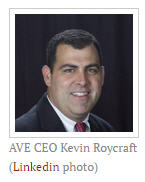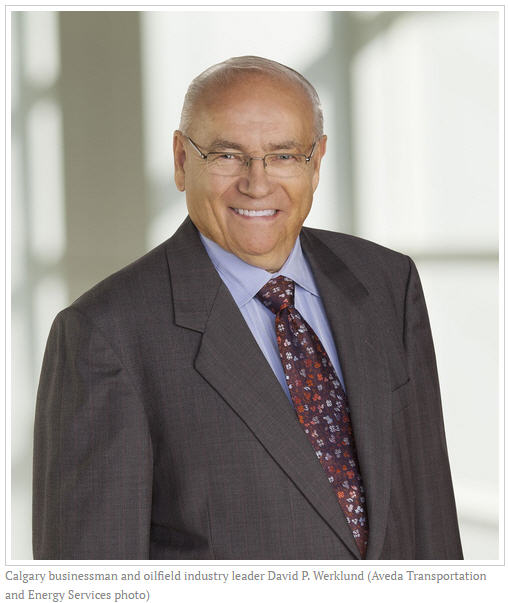The U.S. shale revolution is underway: This drill-rig mover, backed by a Canadian oilpatch titan, is poised to capitalize
According to legend, during the great California and Klondike gold rushes, it was the service providers — those who sold pans and pickaxes — who made the most money, not the miners.
Fast-forward to 2014 and the still-rising shale energy boom is moving the United States ever closer to energy independence. This means drilling activity is skyrocketing — and will continue to be heavy for years.
Meet the Calgary-based energy billionaire planning his next fortune moving drilling rigs, rather than finding properties to use them on. He’s the driving force, you could say, behind an energy services company that is largely under the radar, and will be attending a conference I’m co-hosting Thursday afternoon in Vancouver (Details)
As a young man, he was a boots-on-the-ground “operations guy” who started out as a production manager for Shell. He leveraged values instilled on the farm and strong firsthand field experience into a career building businesses in the energy services sector.
“I can generally recognize a real opportunity when I see it,” Werklund says.
That’s an understatement, given the Calgary-based businessman’s track record. In 1984, Werklund founded a small oil waste treatment company called Canadian Crude Separators (CCS) with an initial investment of $50,000. The market cap was about $8 million.
By the time he took CCS private in 2007 in the largest trust privatization in Canadian history, it had an enterprise value of more than $3.5 billion. CCS successor Tervita now does more than $5 billion in business annually.
Werklund’s business success has made him a wealthy man. He invests through Werklund Capital, one of Canada’s largest family-owned funds, and his long list of investments spans real estate, aircraft leasing and farmland management.
His success has also allowed him to pursue a passion for philanthropy. He founded theWerklund Foundation to invest in youth leadership and educational development, and last year donated $25 million to the University of Calgary’s school of education, now named the Werklund School of Education.
But Werklund is not done yet in the energy business.
In fact, he’s taken his eye for innovation and efficiencies to a fast-growing segment of the oilpatch and positioned his latest company as a market leader through both organic growth and consolidation.
Given his track record, investors may want to take note.
Werklund’s latest venture is Calgary-based Aveda Transportation and Energy Services(AVE.V), which is already the largest pure-play on rig moving in the U.S. Aveda also has a high-margin rentals business.
The company went public in 2006 as Phoenix Oilfield Hauling, but ran into trouble when the financial crisis hit and capital dried up. Aveda rebranded and recapitalized in 2011 and Werklund stepped in as interim CEO.
“It was broken operationally, it was broken financially,” recalls Werklund, now Aveda’s executive chairman.
He brought in a new management team – his new CFO, Bharat Mahajan came from Magna International in 2011. In 2012, CEO Kevin Roycraft was recruited from Liquid Transport, where he was responsible for one of North America’s largest bulk chemical and oil transportation firms.
Aveda dismantles drilling rigs, transports them to the next site, and then sets them up. It’s a robust and growing business – the company estimates that each rig moves an average of 17X a year, making rig moving a $2-billion business.
The business model is simple: they’re not the cheapest day rate, but they move rigs more quickly and more cost-effectively than anybody else in the industry. That’s partly having good people, and partly having the largest service equipment to handle the new big drill rigs the industry is using.
As the Shale Revolution progresses, horizontal wells are getting longer and rigs are getting larger to do this work.
So they are saving the producers a lot of money—they have moved a big drill rig in 4 days where it took the previous operator 11.
That has customers clamouring for them. In fact, Aveda didn’t even have a sales staff in the United States until 2012 — customers simply pulled them into new locations after using their services.
On the M&A side, Aveda’s acquisitions are often smaller mom-and-pop operations, and Werklund has no problem rolling up his sleeves and working directly with the owners to get a deal done quickly and on win-win terms. Aveda typically reinvests capital into the operations and generates significant organic growth very quickly (which is what the market likes).
So far, so good.
For the second quarter ending June 30, Aveda grew year-over-year revenue from $20 million to $32 million. EBITDA increased about $1.3 million to $4.4 million.
Most of Aveda’s revenue growth is coming from the United States, where the horizontal drilling revolution has resulted in an explosion of opportunity for nimble operators.
Aveda has capitalized, and is now one of the biggest rig movers in the U.S., where about three-quarters of the company’s revenue is generated.
The U.S. revenue also tends to flow more consistently year-round — unlike Alberta, where harsher winters disrupt operations every spring.
“You go where the business is,” Werklund says of Aveda’s southern focus. “We’re on a growth trajectory here that we’re quite excited about.”
Management expects American revenue to increase to as much as 80% by the end of the year, bolstered by major acquisitions in North Dakota and Texas — home to an estimated one-quarter of the world’s oil rigs.
In the summer, Aveda also acquired the U.S. rig-moving assets of Precision Drilling, and they immediately expanded those operations into Oklahoma in August. The new branch is already generating $1 million of monthly revenue.
It’s an example of the type of synergy that is driving top- and bottom-line growth for Aveda, which now has a footprint in 80% of key American drilling regions.
Aveda’s experience in the Western Canadian Sedimentary Basin — and the “Canadian content” it brings to U.S. operations — primed the company for its U.S. push, according to Roycraft (an American).
“They are moving in conditions that are muddy or frozen, minus 40 degrees, and they have to be efficient. You cannot waste moves. They move at night and in the States they seldom move at night and we’re starting to see a shift towards that. So the efficiencies we brought … were ways to move rigs they hadn’t seen before.”
 Roycraft will be presenting at Thursday’s Subscriber Investment Summit organized by myself, Keith Schaefer of Oil & Gas Investments Bulletin and Eric Coffin of the Hard Rock Advisory.
Roycraft will be presenting at Thursday’s Subscriber Investment Summit organized by myself, Keith Schaefer of Oil & Gas Investments Bulletin and Eric Coffin of the Hard Rock Advisory.
In addition to Canadian best practices, two other differentiators give Aveda traction in the U.S.: larger, more modern equipment than competitors and a standardized approach to safety.
Both characteristics are vital for Aveda’s clients, which include blue-chip E&P companies like ConocoPhillips, Cenovus and Nexen.
Werklund has an aggressive growth plan to achieve $300 million in revenue and EBITDA margins of 20%. And if Aveda continues to deliver on its aggressive growth goals, word should spread.
For now, Aveda’s accomplishments have yet to be recognized by the market — the company trades at a discount to competitors’ valuations on everything from price/sales and price/earnings to enterprise value/EBITDA.
Werklund doesn’t seem worried. One lesson the dynamic entrepreneur has learned in a long and successful business career is to stay the course and not get ahead of yourself.
“As entrepreneurs, we get stars in our eyes, we believe in ourselves so much that we tell the world,” says the member of the Calgary Business Hall of Fame. “I guess the fundamental principle that I learned is you tell people after you’ve delivered.”
Aveda is delivering, and analysts are starting to notice. Eight of them rate Aveda a strong buy, with an average target price of $8.13. The stock closed Tuesday at $4.51.
“Aveda is unique as a pure play on oilfield transportation,” a recent report from Jennings Capital states. “Its competitors lack access to growth capital, either because they are relatively small divisions within diversified public companies, or because they are small private players.”
The combination of rapid top- and bottom-line growth and a revaluation to levels that its peers are trading at are two powerful catalysts for the tightly held stock, which trades on the TSX Venture. It just makes sense they will get a TSX listing sometime next year.
If and when Aveda’s stock gets re-rated, Werklund stands to benefit as the owner of 33% of outstanding shares (through Werklund Capital). A tight share structure — just 20 million shares outstanding — could also fuel upward momentum.
From his vantage point as an entrepreneur who transformed a small enterprise into a multibillion-dollar operation, Werklund says he’s “excited” about Aveda’s blue-sky potential.
If Werklund and his team continue to deliver — both the drilling rigs and the dollars —AVE could be another exciting ride for shareholders.
By: Tommy Humphreys
Disclaimer: This letter/article is not intended to meet your specific individual investment needs and it is not tailored to your personal financial situation. Nothing contained herein constitutes, is intended, or deemed to be — either implied or otherwise — investment advice or a solicitation to purchase or sell securities or investments of any kind. Author is biased with regards to Aveda Transportation and Energy Services, having a financial relationship with the company (2014 Subscriber Investment Summit Vancouver and CEO.ca sponsor). At the time of publishing, author holds no positions in the companies mentioned in this article, but that is subject to change in the future without further notice. This letter/article reflects the personal views and opinions of Tommy Humphreys and that is all it purports to be. While the information herein is believed to be accurate and reliable it is not guaranteed or implied to be so. The information herein may not be complete or correct; it is provided in good faith but without any legal responsibility or obligation to provide future updates. Neither Tommy Humphreys, nor anyone else, accepts any responsibility, or assumes any liability, whatsoever, for any direct, indirect or consequential loss arising from the use of the information in this letter/article. The information contained herein is subject to change without notice, may become outdated and may not be updated. The opinions are both time and market sensitive. Thomas Humphreys, entities that he controls, family, friends, employees, associates, and others may have positions in securities mentioned, or discussed, in this letter/article. While every attempt is made to avoid conflicts of interest, such conflicts do arise from time to time. Whenever a conflict of interest arises, every attempt is made to resolve such conflict in the best possible interest of all parties, but you should not assume that your interest would be placed ahead of anyone else’s interest in the event of a conflict of interest. Everything contained herein is subject to international copyright protection. Please see Aveda Transportation and Energy Services web site for more information and important legal disclaimers at AvedaEnergy.com.
More News
Gold that flowed into US in tariff bet now slowly trickles out
April 14, 2025 | 12:57 pm
PDAC video: Gabon’s Millennial Potash aims to become Africa’s first potash miner, CEO says
April 14, 2025 | 12:00 pm
{{ commodity.name }}
{{ post.title }}
{{ post.date }}





Comments